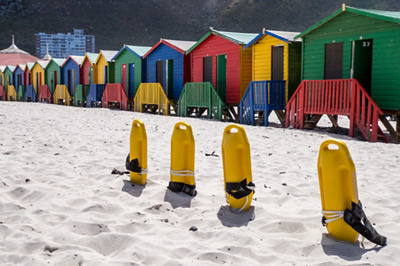Raeesah Boomgaard, Branch Manager, ER24 Johannesburg West, shares essential advice for keeping your child safe in the water.
Myth: A float suit, arm bands or a life jacket will keep my child safe in water.
Fact: Flotation devices may keep children above water, but they also give them a false sense of safety, thinking they can swim. “We can’t emphasise this enough – children and inexperienced swimmers should never be anywhere near water without adult supervision. Arm bands and similar equipment are not life-saving devices.”
Myth: Drowning is noisy. Even if I’m not present, I’ll hear my child splashing and struggling – which will give me enough time to help.
Fact: Drowning is known as “the silent killer” for a reason. “When children are drowning, all their energy goes into trying to breathe and staying above water. They’re not yelling for help or waving their hands. Drowning is often very silent, and children can’t right themselves or stand up, no matter how shallow the water is. Often, they just ‘slip away’ in silence. Children in rural communities are particularly vulnerable to drownings in farm dams, rivers and streams. Every child’s access to water should be strictly monitored. It takes only seconds for a child to drown.”
Myth: If there’s a lifeguard on duty at the beach or pool, my child will be safe.
Fact: A lifeguard is scanning the entire area, not just watching your child. Water safety is about being aware, prepared, and responsible. This means being aware of the water conditions, including rip currents and tide changes. Rips are deceptive because the water looks calm between the currents. Teach your child that if they get caught in a rip current, they shouldn’t panic. Rather, they should swim parallel to the shore until they escape the current's pull. Also keep a safe distance from rocks, cliffs, and piers, as strong waves can pose a danger in these areas. Avoid swimming alone.
Myth: I don’t plan to go near any rivers, dams, beaches or pools this holiday so my family should be safe.
Fact: “Water hazards are everywhere, including in and around your home. Toddlers have drowned in buckets, fishponds, and basins. Keep young children out of the bathroom except when directly supervised, and don’t leave buckets or barrels where they can gather water.”
Myth: My kids are strong swimmers. No need for a pool fence anymore, right?
Fact: “If you have a private pool, safety barriers, like fences and childproof gates, are essential to prevent unexpected access from the neighbourhood or visiting children.” Also enforce a “no running” rule around the pool to prevent accidents, and don’t allow glass or bottles near the area.
Myth: If someone is drowning, I should immediately jump in to help.
Fact: Not necessarily. Jumping into dangerous water may prove fatal for you, too. Struggling swimmers often panic and try to grab onto you. Even experienced swimmers can battle to pull someone to safety amid tides, obstructions and other dangers. If possible, try to reach the person from the side of water – or throw them a flotation device – such as a buoy, branch or piece of wood.
“The most important thing to be aware of is that a child can drown in a matter of seconds,” warns Boomgaard. “Learning CPR can save someone’s life.”
Call ER24 on 084 124 for real help, real fast in any emergency.

